
Piecing Together History: The Martha Washington Dress Quilt in the Revolutionary Spaces Collection
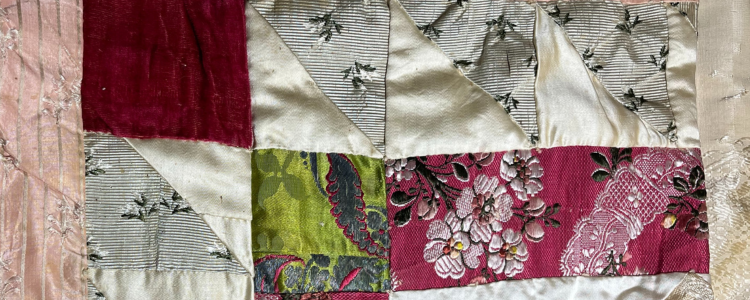
Written by Lori Fidler, Associate Director of Collections
Not long after I joined Revolutionary Spaces, I came upon an intriguing description in the object files: a quilt made from fragments of Martha Washington’s dresses. It would be a few months before I had the opportunity to see the unique textile in person. As I peeled back the wrapping, I was amazed to see the vibrant colors of this stunning handiwork, composed of a variety of silk fragments. The quilt was beautiful, but could it really be made of garments worn by America’s first First Lady?
Born Martha Dandridge in 1731 Virginia, Martha married Daniel Parke Custis in 1750. The early death of her husband left her a widow and proprietor of the Custis estate and businesses at age 26. Her responsibilities included ordering products to be sold at market and she quickly developed an acumen for choosing quality materials, including fine English silks, lace, and clothing.
Martha met George Washington in 1758 and the couple married the following year. She settled into life at the Mount Vernon plantation, becoming a renowned hostess. But life changed with the American Revolution’s start in 1775. Martha loyally supported George, spending months with him on the front lines, sewing clothes for soldiers and starting a sewing circle to help war efforts. When George became president in 1789, Martha turned again to hosting, holding President’s House receptions. Although known for wearing homespun clothing, she also owned fashionable imported silk gowns.
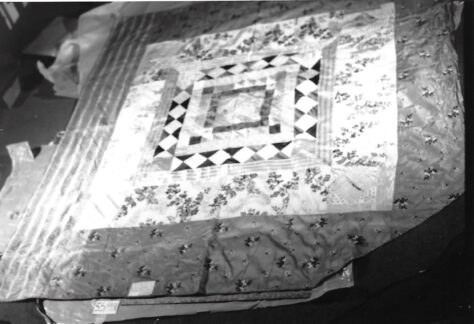
Jane Washington, c. 1790
Silk and linen
OSA-931
Collection of Revolutionary Spaces
The Revolutionary Spaces quilt contains a similar mix of materials, with fine silks on the facing contrasting with a plain pieced linen backing. In 1979, a textile curator at Boston’s Museum of Fine Arts examined the quilt, finding the silk pieces to be expensive English-made loom-woven fabrics, consistent with textiles worn by wealthy women of the 1700s. He mentioned that the designs represented a range of time periods, with larger floral patterns from the mid-18th century and tiny blossoms from the late 1700s.
The object file also had many secrets to reveal. The quilt had been donated to Old South Meeting House in the 1890s by philanthropist Mary Hemenway, who played an important role in saving the building from the wrecking ball. With an enthusiasm for Revolutionary history, she became an avid collector of Washington memorabilia. Hemenway purchased the quilt from a woman named Fannie Washington Finch.
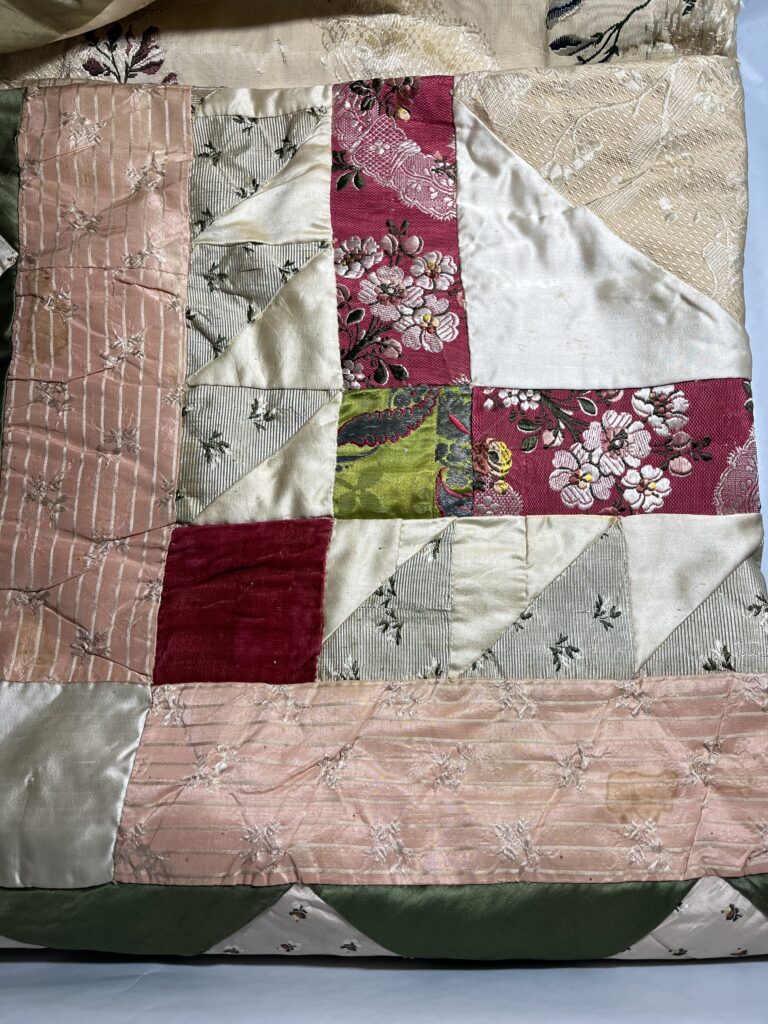
Collection of Revolutionary Spaces
Fannie was born Frances Louisa Augusta Washington in Virginia in 1828. Her mother, Henrietta Spotswood, was the granddaughter of George Washington’s half-brother, Augustine, Jr., while her father, Bushrod, was the grandson of George’s brother, John Augustine. Fannie’s grandmother, Jane Washington, had made the quilt out of scraps she received directly from Martha. In her writings, Martha Washington mentions cutting up her garments and distributing pieces to family members and friends as mementos. Jane died in 1791, several years before Martha, so she made the quilt during Martha’s lifetime. According to Finch, the gowns were worn to state events. The quilt is a log cabin design, made of pieced silk on the face with a pieced linen backing and silk binding on the edge.
While living in Washington, DC, Finch became acquainted with Mary Bucklin Claflin, a writer and suffragist and wife of Massachusetts Governor and U.S. Congressman William Claflin. Bucklin connected Finch to fellow Bostonian Hemenway and Finch offered to loan the quilt to Old South Meeting House in 1886, where it went on display. With the death of her husband, Finch faced financial difficulties and eventually sold the quilt to Hemenway. When Hemenway died, she donated the quilt to Old South Meeting House.
In May 2024, our staff learned even more about the quilt after an examination and presentation by historians Kimberly Alexander and Zara Anishanslin. According to Alexander, the backing is made of numerous pieces of linen worked by several different hands. Given that the quilt was made circa 1790, this may have included the work of enslaved people. The Washingtons were one of the largest slaveholding families in Virginia and enslaved people worked in all aspects of plantation life, including sewing and mending.
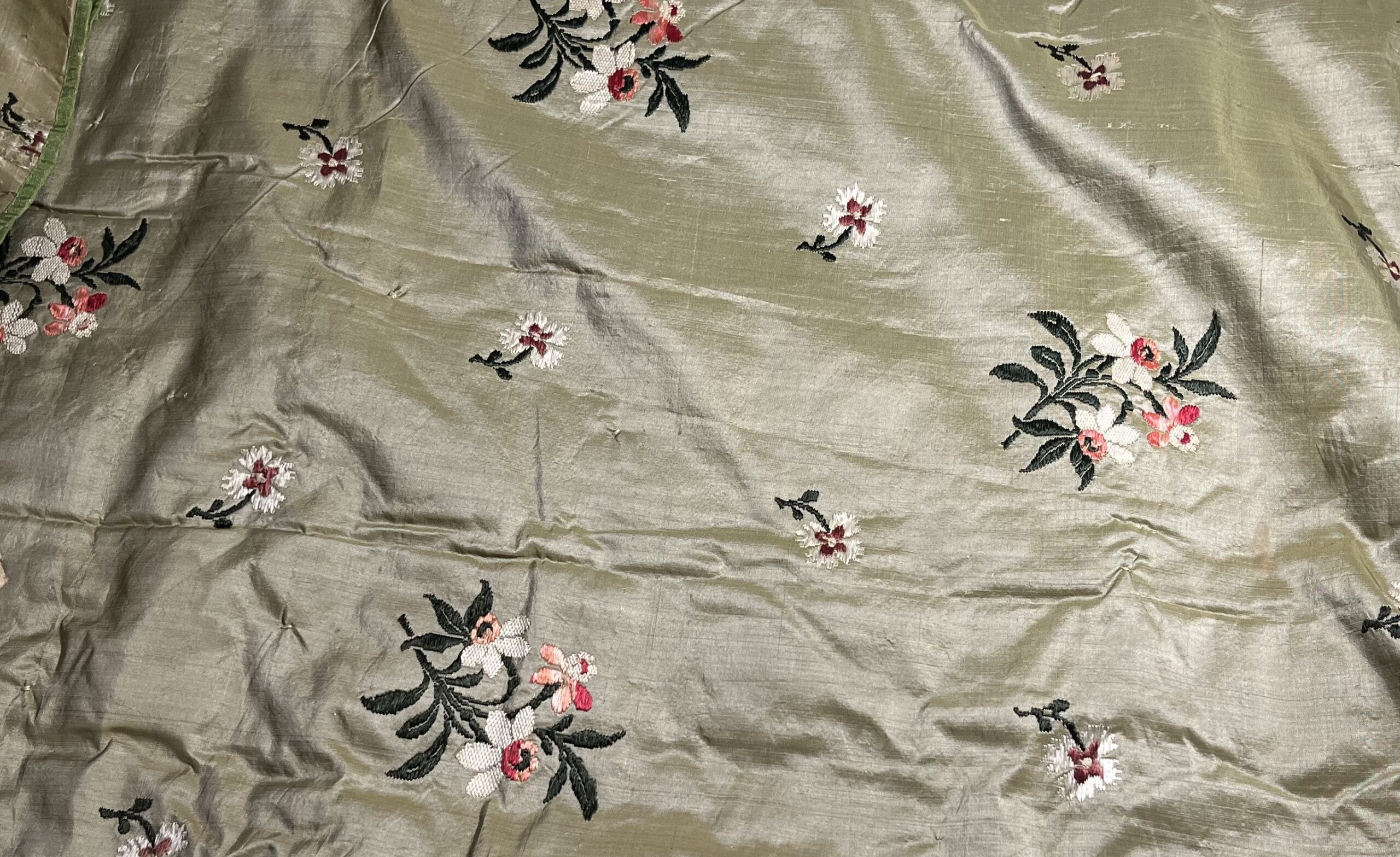
Collection of Revolutionary Spaces
It was an exciting moment for staff when Anishanslin noted that a fabric used in the quilt appeared to be an Anna Maria Garthwaite design. Garthwaite was a female silk designer who lived and worked in the Spitalfields area of London in the mid-1700s. Her designs drew inspiration from nature, with motifs resembling botanical drawings. Garthwaite’s designs were highly coveted and fashionable in America.
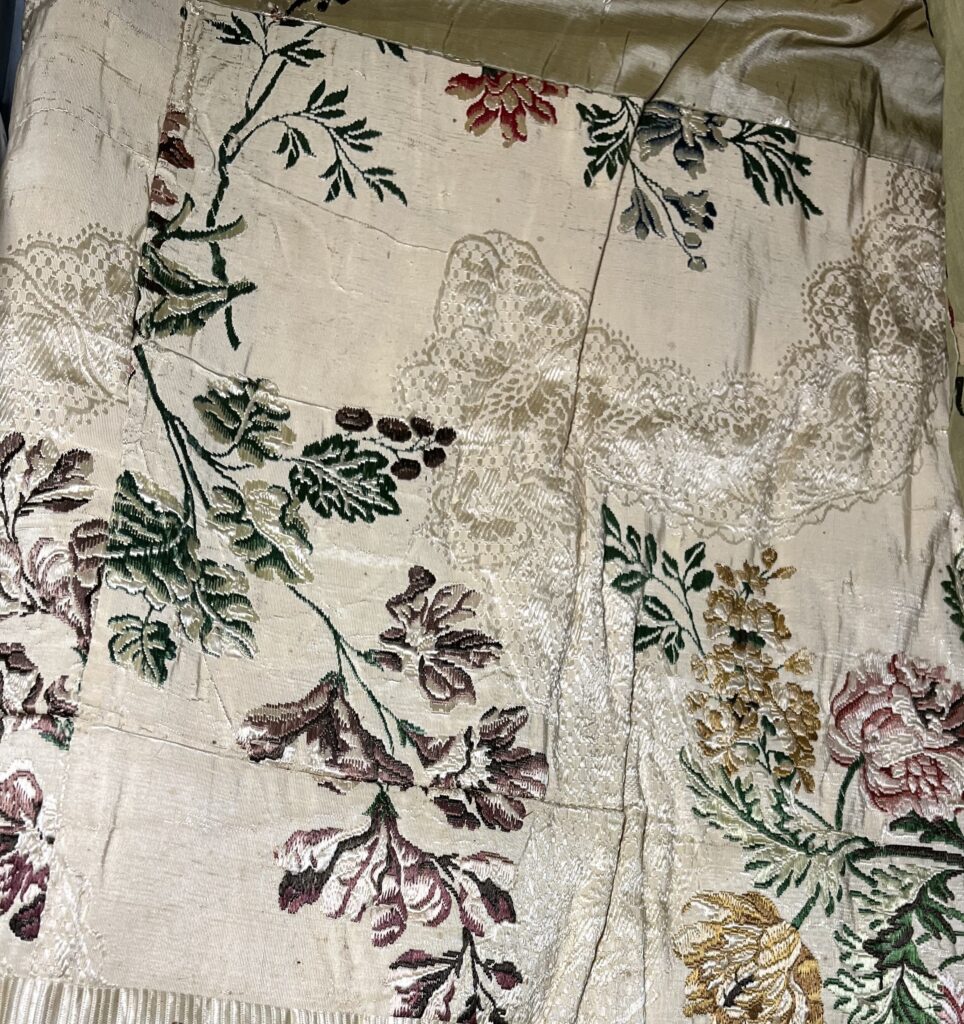
While we may never conclusively know if the fabrics in the quilt were owned by Martha Washington, the fragments of history gathered during the research on this unique object show strong connections to the Washington family and intriguing possibilities. Despite many years on display, the quilt retains its vibrant hues more than 250 years after the materials were made. A beautiful piece of early American handiwork, it will be carefully preserved and studied by Revolutionary Spaces so that future generations may appreciate and learn from it.

